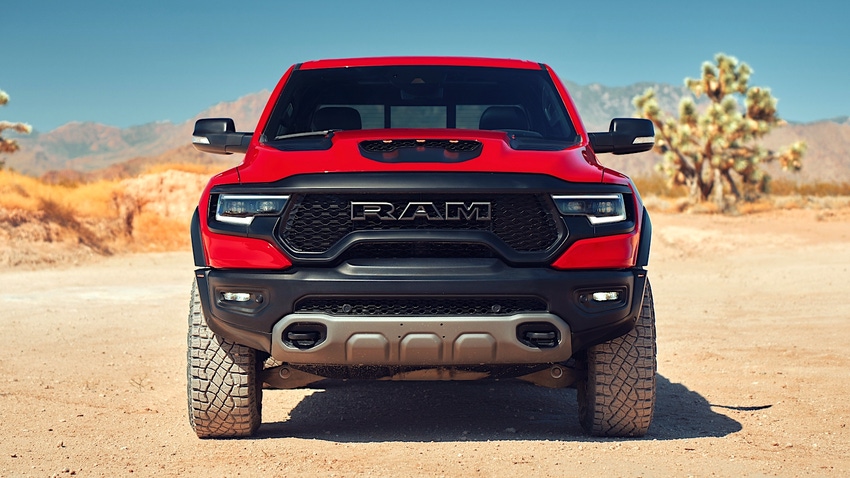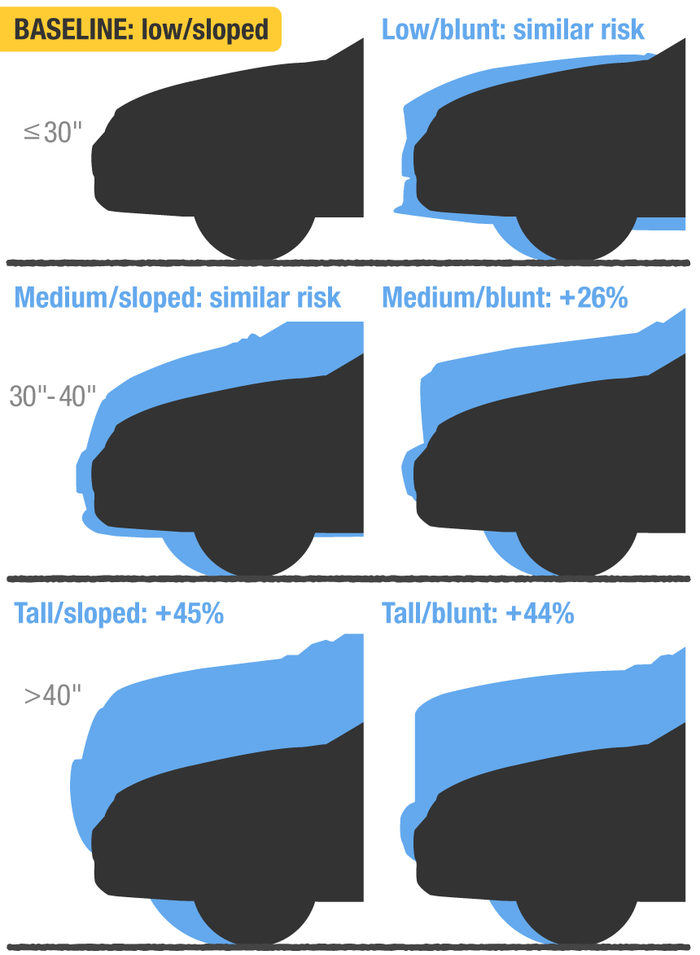IIHS Finds Significant Increase in Pedestrian Fatalities from Tall, Boxy Vehicles
Consumers’ shift to tall, squared-off SUVs is killing pedestrians at a shockingly high rate.

“I’m just not a minivan person.” That’s the remark that typically explains the purchase of a tall, rectangular SUV as a family hauler. According to the Insurance Institute for Highway Safety, the cost to society is an increase in the likelihood of pedestrian fatality of about 45 percent compared to the baseline car.
A minivan’s sloped, medium-height front end, on the other hand, presents a similar risk to pedestrians as that of a car.
“It’s clear that the increasing size of the vehicles in the U.S. fleet is costing pedestrians their lives,” said IIHS President David Harkey. “We encourage automakers to consider these findings and take a hard look at the height and shape of their SUVs and pickups.”
This is in spite of pedestrian-protection requirements that have softened vehicles’ front ends to help cushion the impact. IIHS reports that the average U.S. passenger vehicle has grown about 4 inches wider, 10 inches longer, 8 inches taller, and 1,000 lbs. heavier in the last 30 years. Since reaching a low in 2009, pedestrian fatalities have increased by 80 percent.
IIHS researchers analyzed 17,897 crashes involving a single passenger vehicle and a single pedestrian, calculating key front-end measurements corresponding to 2,958 unique car, minivan, large van, SUV, and pickup models from their vehicle identification numbers and photographs. They excluded vehicles with pedestrian automatic emergency braking systems so that vehicle size would be the only variable, without complications from the vehicle’s safety systems. They also controlled for the speed limit and pedestrians’ gender.

IIHS
What they found is that vehicles with hoods rising more than 40 inches from the ground and with their grille sloped at 65 degrees or less pose a 45 percent greater chance of inflicting fatal injuries on pedestrians than the baseline car would. The even boxier styles typical of pickup trucks showed an increase of 44 percent.
When vehicles are that tall, the slope of the grille apparently doesn’t matter. But among mid-size vehicles such as minivans and crossover SUVs, it is significant. For vehicles with hood height of 30-40 inches, those with squared-off front ends were 26 percent more likely to inflict fatal injuries, while the sloped minivan-style nose produced comparable results to the baseline car, at 30 inches or lower.
Researchers found that vehicles with hoods taller than 35 inches are more hazardous because they cause more severe head injuries to pedestrians. Those with blunt front ends inflict worse torso injury because they tend to strike with the grille, while sloped vehicles tend to lift the pedestrian and strike the torso with the hood. Unsurprisingly, shorter pedestrians fared worse, as they shifted the height proportion to an even worse one.
This research suggests that pedestrian protection efforts to this point are not addressing the m most relevant factors, potentially creating the possibility for the study of additional regulations to mitigate the problem of fashionably tall, blunt-nosed vehicles. “More aggressive-looking vehicles can indeed do more harm,” concluded Harkey.
Potentially, today’s rugged individualists will have to channel their inner minivan people when they buy family vehicles in the future.
About the Author(s)
You May Also Like





